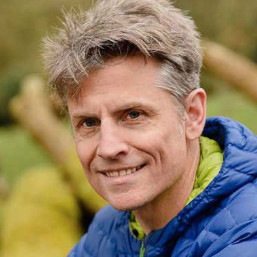Highland cattle today are giant ginger cows, an ancient breed with primeval shaggy coats, pointed horns and floppy fringes, standing steadfast in the teeth of the gale.
Highland cattle – or coos – are descended from a line of wild cattle, Hamitic longhorns, that the Egyptians domesticated more than 6,000 years ago. From there, they reached the Iberian Peninsula and were slowly brought north until they arrived in the Outer Hebrides in the second millennium BC, where they were selectively bred to be small and to have long, black coats.
The red version that is more common today only became popular as a result of the Victorians’ preference for it. In fact, Highland cattle can be red, black, creamy-white and a subtle dun colour that would make the coat-wearer look – if it weren’t for the horns – like a cuddly teddy bear.
Those long, oily shaggy coats are an essential part of the armoury that allows them to survive in sub-zero conditions, but there’s a soft, thick undercoat, too.
For more UK cattle species, explore our comprehensive guide
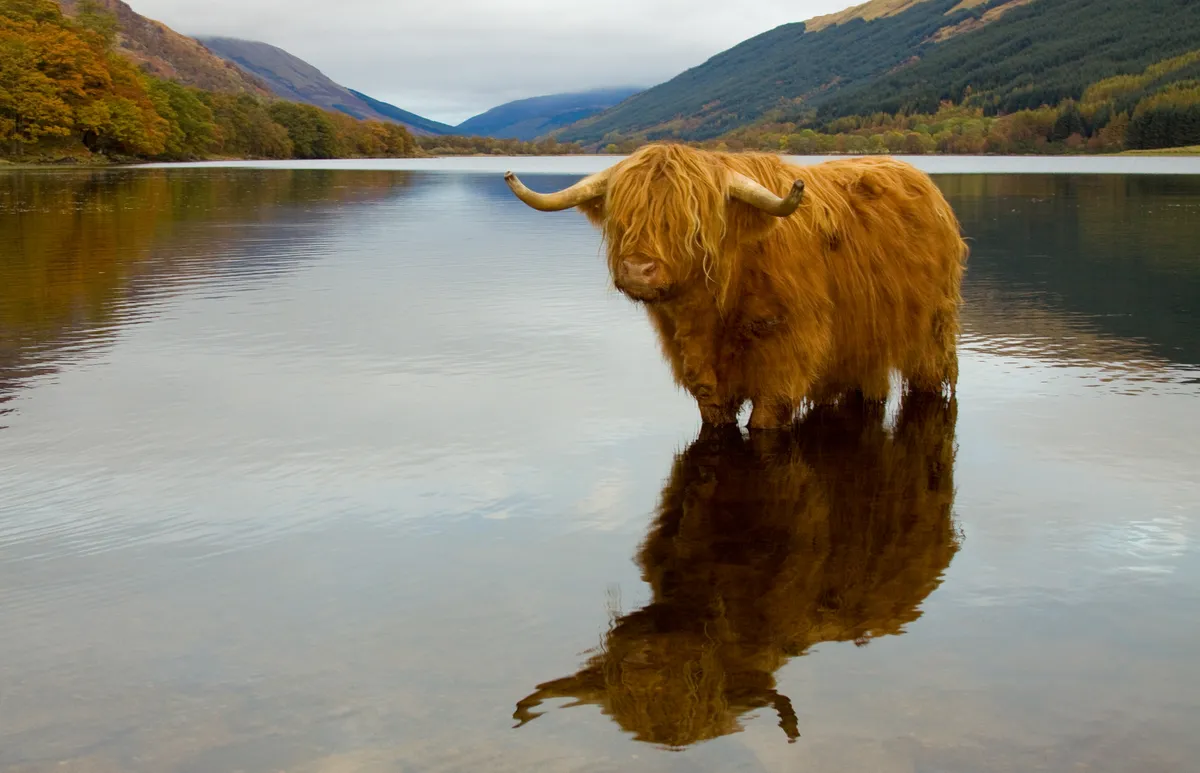
What is a herd of Highland cattle called?
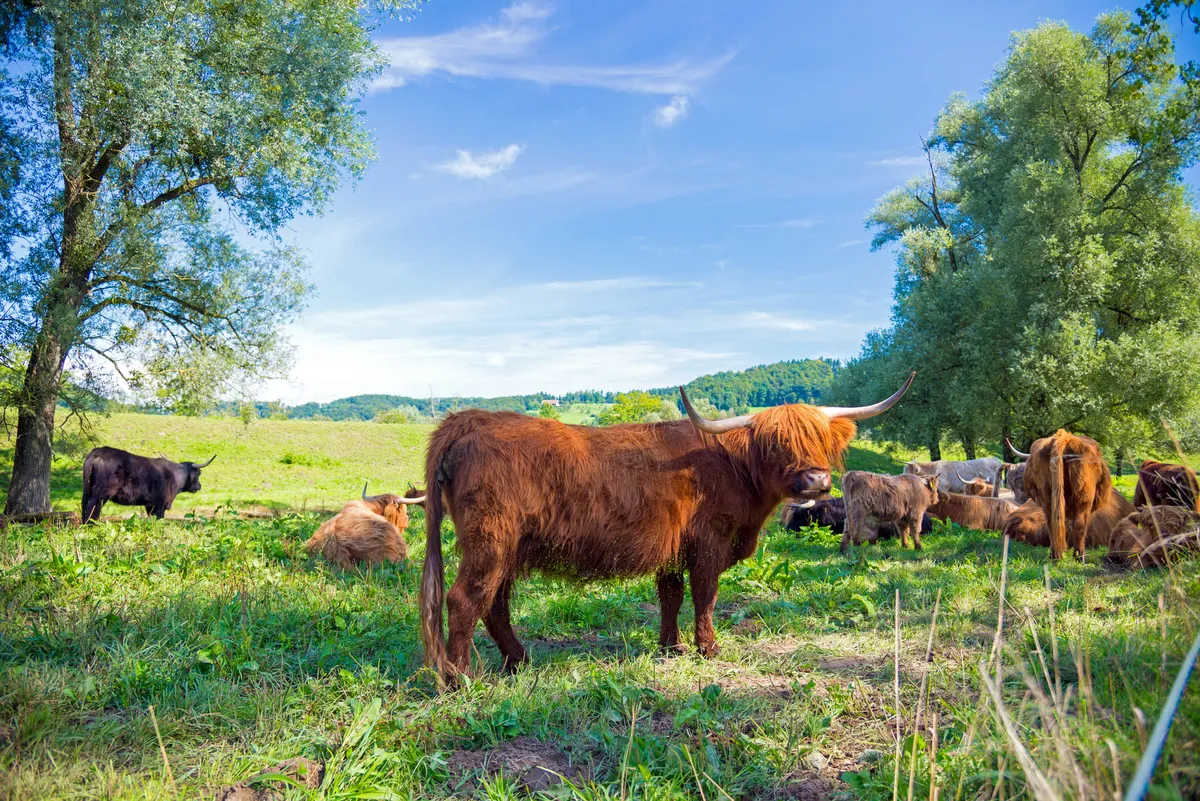
A herd of Highland cattle is called a fold because they were originally kept in stone shelters, known as folds, to keep them safe at night. Folds can number anything from a few animals up to 150 or more, though many farms and estates will typically divide up that number of animals into smaller groups.
There is rarely little aggression within a fold – if there’s a bull, he will rule the roost, otherwise the oldest female is likely to be in charge. Calves of the top-ranking cow will be more senior to other offspring. Top cows will dictate where the fold roams and will probably barge their way to the front if any supplementary food is on offer. Any tension between individual animals is usually settled by a threat and then spontaneous withdrawal of that threat – that’s enough for the junior one to back down.
You can tell the difference between males and females from their horns – the former’s are thicker and point forward, the latter’s point markedly up.
What do Highland cattle eat?
Highland cows can survive on a diet that includes low-quality grasses, saplings, thistles, heather and really almost anything whose path they cross.
For most of the year, good grazing on croft pasture, together with the more marginal machair and moorland, provide sufficient nutrition. In the winter, they do need some supplementary food, but this is usually home-grown sileage or haylage.
Can you eat Highland cattle beef?
Foraging on a range of grass, fibrous plant matter and heather produces a highly sought-after meat. “Highland beef can be expensive, but it’s worth the money,” says Kenny Matheson, who farms Highland cattle on the Outer Hebrides. “People buying it know it’s home-grown, low in food miles, low in saturated fats and high in protein. A lot of it is shipped down to fancy restaurants in London, and they like it because of these qualities and because they can trace everything that’s gone into it.”
There are some downsides to Highland cattle. Bred purely for their beef, they are relatively small compared to some more modern breeds, weighing one third less than comparable beef animals such as Limousin, Angus or Charolais.
Perhaps even more significantly, they are slow to mature, with calves needing to reach about 30 months until they are ready to be sent to market. But, thanks to that ability to survive in almost any weather, off low-grade forage and with little veterinary care, the financial inputs are correspondingly low.
A tough breed
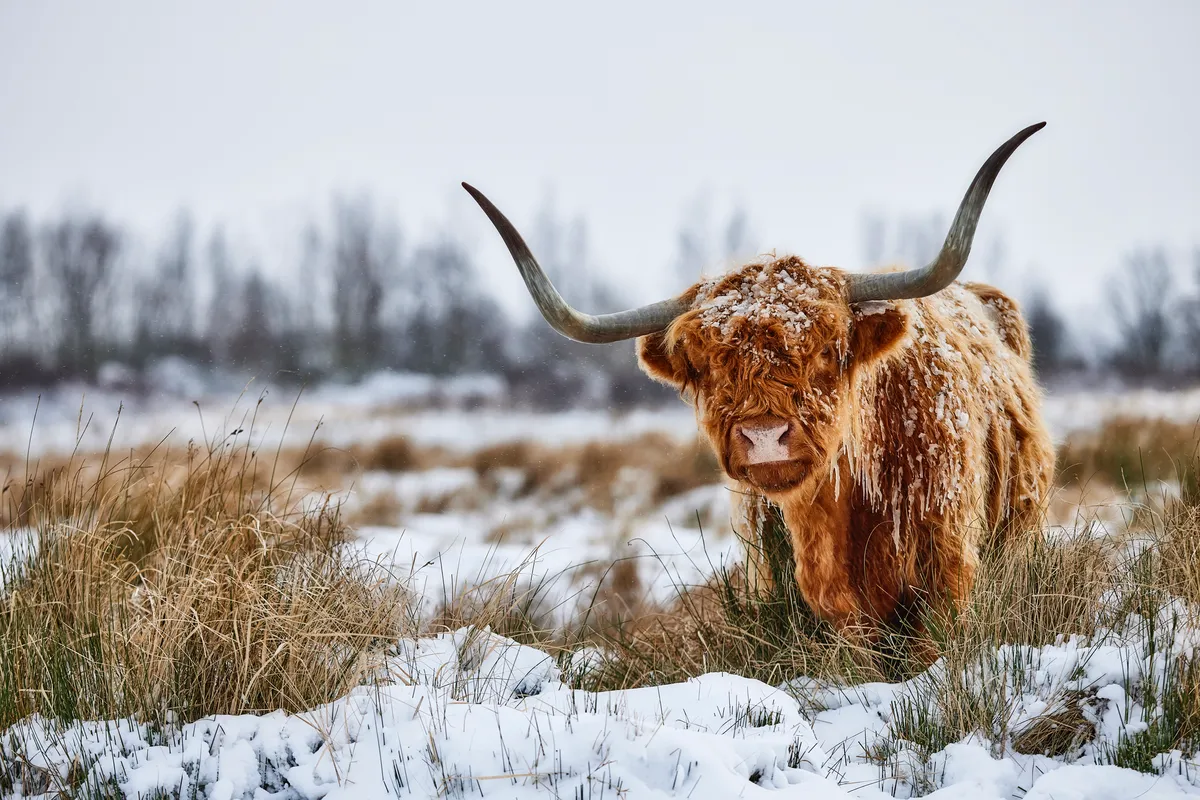
Highland cattle require remarkably little veterinary intervention, and are less prone than other cattle to diseases such as pink eye or eye cancers because the floppy fringe, or dossan, protects them from the sun and irritants such as flies. According to Joyce Jones, who keeps a fold of nine Highlands on Minchinhampton Common in Gloucestershire, they rarely need help when it comes to calving.
It used to be the case that Highland cattle were driven to market from islands across narrow stretches of water called kyles, which literally means sound or strait in Gaelic. Think the Kyle of Lochalsh, which separates the Isle of Skye from the mainland or the Kyle of Tongue in Sutherland. That doesn’t now happen, but again it reveals the hardiness of this unique breed.
Are Highland cattle dangerous?
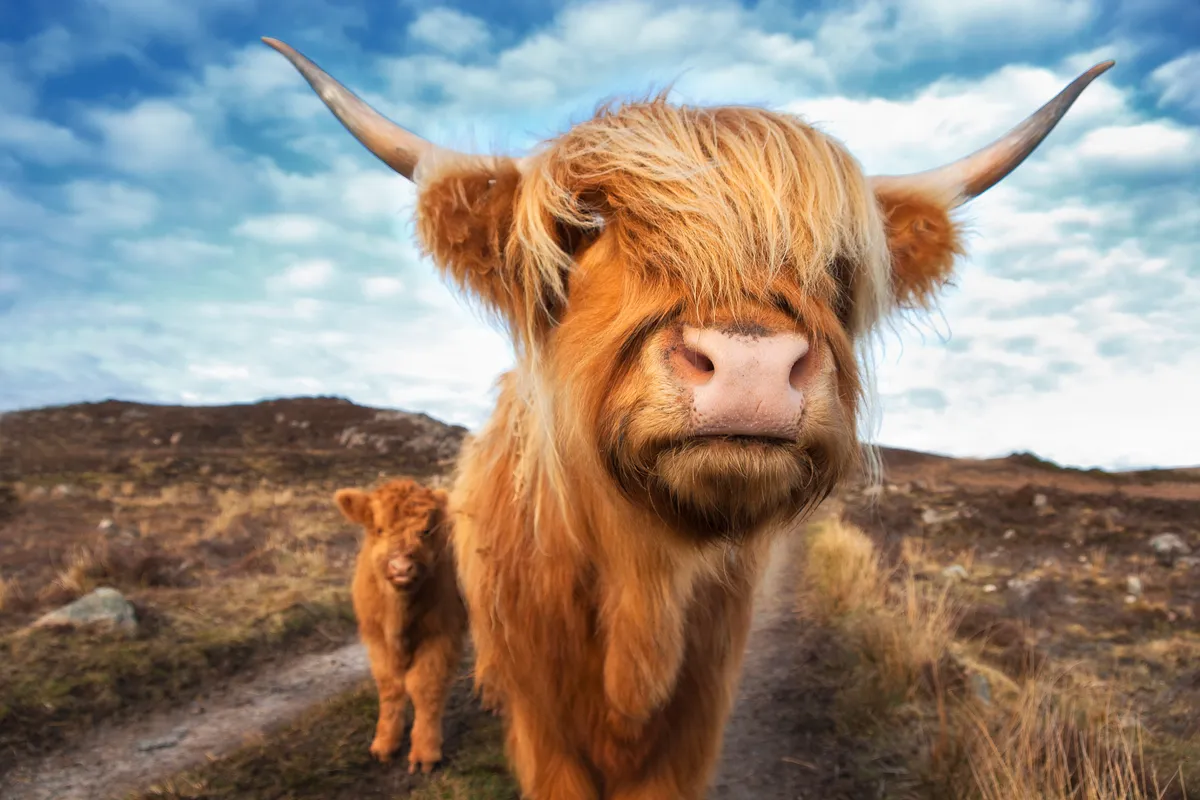
While Highland cattle may look fearsome with their huge horns, in reality they possess a calmness and tranquility that is in marked contrast to many cattle.
“Highlands are – in the nicest possible way – thrawn [stubborn],” says Grant Mackenzie, who runs a 150-strong herd, known as a ‘fold’, at Rothiemurchus. “I’ve had them all my life, and though they are very easy to work with, they require a lot of patience. They are very intelligent, and if they think they can get the better of you, they will.”
Kenny Matheson, who has a fold on the west coast of Lewis in the Outer Hebrides, a location where gale-force Atlantic storms rather than Arctic temperatures are the main hardship, also attests to their gentle nature, despite those horns and a reputation for an instinct that is fiercely protective of their calves. “If they’ve been brought up well, they are pretty easy-going,” he says.
What are Highland cattle used for?
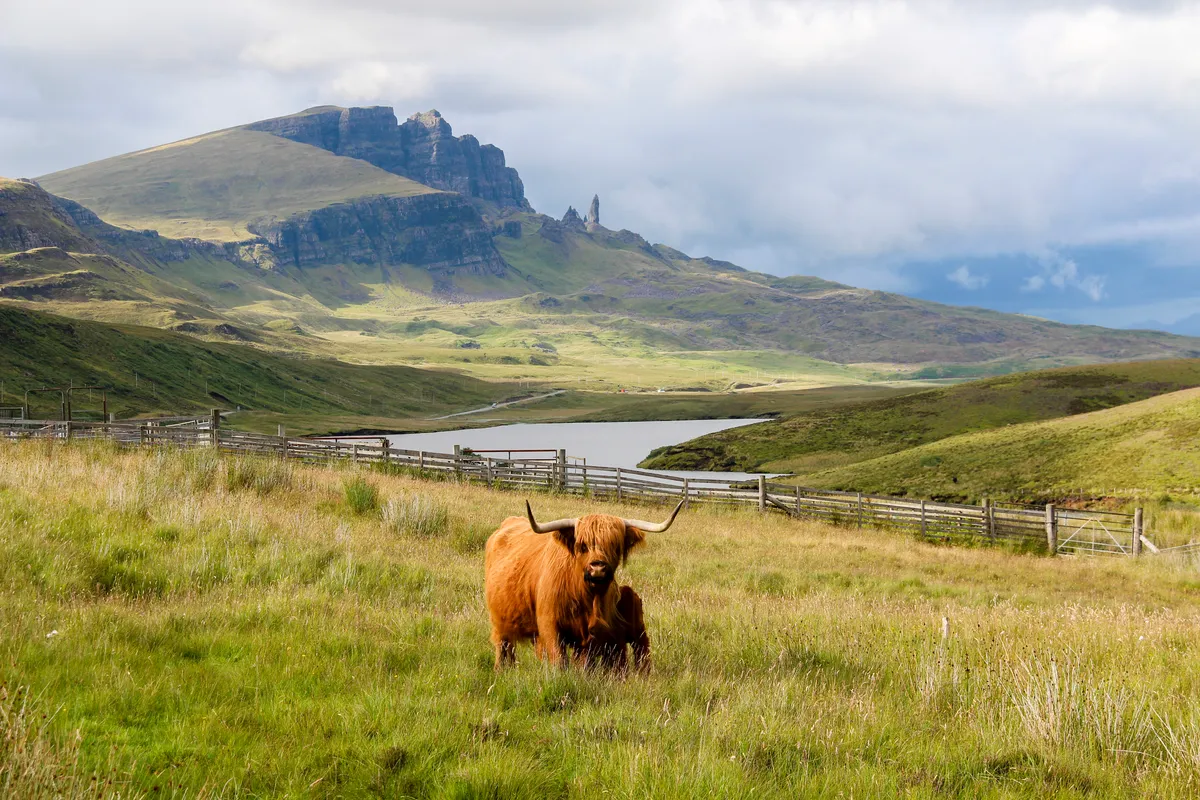
Today, Highland cattle are not only exported far and wide for their excellent-tasting meat, but are also valued as conservation-grazers. This is where domestic livestock are utilised for their ability to forage in a way that increases floral diversity in a grassland. Cattle are best for this because they feed in a selective way, using their tongue like an elastic hand, while sheep crop a pasture as closely as a lawn-mower.
Highland cattle also feed on woody plants, creating more space for wildflowers. Those thick coats pick up seeds that are then dispersed as they freely roam, and their small size and weight means they have a lower impact in terms of trampling pressure. Grant Mackenzie says they help to clear space for new growth on the forest floor and also bring seeds in through their dung.
With the increasing focus on the nature crisis here in the UK, these qualities of Highland cattle mean their importance will only continue to grow. “When you think of Highland cattle, you think of Scotland, but people are starting to take an interest in what they do, rather than just taking photos of them,” says Mackenzie. They are not the only example of way of managing land that goes back to the past to clear the path to a brighter future.
Where to see Highland cattle
You can see Highland cattle throughout Scotland, and they are arguably as representative of its wilder parts as red deer or golden eagles. Drive along the long and lonely road to Fionnphort on the Ross of Mull and you see them wallowing in wetland areas subject to daily tidal flooding and where carbon-hungry saltmarsh plants and vegetation unpalatable to other breeds are eagerly grazed.
You also see them all over other parts of the British Isles and across the rest of the world, too. The US, Australia, Canada, Norway, Finland and Switzerland have all eagerly imported Highlands over many decades. They are iconic within Scotland and as sort of bovine diaspora across the western world.
Rothiemurchus, Cairngorms
The estate runs “Hairy Coo Safaris” for guaranteed sightings, but you are free to wander the estate on your own.
Culloden Battlefield
Where the 1745 Jacobite rebellion came to a bloody end – now home to a pair of Highland cows.
Edinburgh and beyond
The Hairy Coo tour company runs trips from its Edinburgh base, with Highland cattle the focus everywhere it goes – the Trossachs herd is a highlight.
Hushinish, Harris
For a remote setting, you can’t beat Hushinish on the west coast of Harris. Good chance of Highlands on the drive there or on the beach.
Dolmelynllyn Estate, Snowdonia
Highland cattle graze woodland, reducing scrub and creating the conditions for bluebells and wild garlic to flourish.
The Doodales, North Yorkshire
Stay at the farm and enjoy watching the small Doodale fold, which includes both red and black cows.
Cathole Cliffs, South Devon
More conservation grazers – these ones roam spectacular cliff tops overlooking the English Channel.
The Highland Cattle Society
The Highland Cattle Society was formed by farmers and landowners as a register for the breed to protect its identity and pedigree. Founded in 1884, it support farmers with Highland cattle with advice and promotes the breed at agricultural shows. If you want to buy Highland cattle, the society is a very good start.
